Search Results for Tag: science
Ex-IPCC chief: 5°C warming?
The former chair of the Intergovernmental Panel on Climate Change says global average temperatures could reach five degrees centigrade above their pre-industrial level. British scientist Sir Robert Watson, who chaired the panel from 1997 until 2002, said the world had missed its chance to keep emissions below the level needed to keep to the 2°C maximum target set by the international community.
Speaking at a symposium on “Preventing global con-communicable diseases through low-carbon development” at the London School of Hygiene and Tropical Medicine, (LSHTM), Professor Watson said the chances of keeping temperature rise below three degrees are fifty-fifty, and the rise could be as high as five degrees. That would mean the Earth warming more than it has since the end of the last Ice Age. The consequences for the planet would be dramatic.
In a report for the “Climate News Network”, environment reporter Alex Kirby quotes Watson as saying: “All the promises in the world, which we’re not likely to realise anyway, will not give us a world with only a 2°C rise. All the evidence, in my opinion, suggests we’re on our way to a 3°C to 5°C world.”
The British expert is science director of the Tyndall Centre for Climate Change Research at the University of East Anglia, UK, and chief scientific adviser to the UK Government’s Department of Environment, Food and Rural Affairs. He says there are solutions available to tackle climate change, but a lack of political will and moral leadership to implement them. Emissions are continuing to rise at a rate which makes it highly unlikely the two degree target can be adhered to.
“When I was chairing the IPCC we were all very optimistic that we’d have a global agreement to limit emissions, though we knew it would be difficult. But we were hopeful that emissions would not go up at the tremendous rate they are rising now,” says Watson.
More on this story at Climate News Network
A climate-friendly future? Impressions of Masdar City
Today I paid a visit to Masdar City 17km from the centre of Abu Dhabi, set up in 2006 with the aim of being “one of the most sustainable cities in the world”, according to Masdar. Masdar was set up as a commercially driven renewable energy company and a strategic government initiative. The city is powered entirely by renewable energy and the buildings are designed to maximize energy efficiency.
This is an impression of the iconic architecture of Masdar around a pleasantly cool courtyard. (The modest gentleman on the couch is Sultan Aal Ali, in charge of Masdar’s development).
In the years since the vision of a sustainable, purpose-built city at the heart of a desert state was first launched, a lot of the enthusiasm seemed to have gone out of the project, at least in the view of a lot of media. That is one reason why I was keen to have a look at what is happening there today. I will be writing an article for our website on this in the next couple of weeks, so for today I’d just like to share some pictures, thoughts and impressions with you.
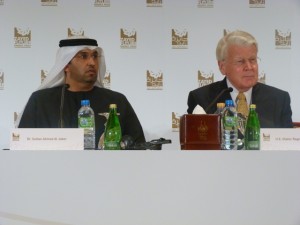
Dr. Sultan Ahmed Al Jaber, Director General of the Zayed Future Energy Prize with President Grimsson
Incidentally, as part of the World Future Energy Summit and at the ceremony announcing the 2013 Zayed Future Energy Prize here last night, the ICE connection was brought up again by the President of Iceland, Olafur Ragran Grimsson.
He was chairman of the prize jury and was talking about those connections between the record melt of the Arctic ice and the push for renewables here in the oil-rich Gulf region. Yes! The message seems to have arrived on the global stage.
Anyway, to Masdar City:
Using the sun to cool Masdar. Normally, air-conditioning would be one of the highest electricity-guzzlers and emissions producers. The architecture uses window-to-wall ratio, insulating building materials, shading and other means to keep buildings cool – and uses sun power to do the rest.
A modern version of a cooling wind-tower, to bring cold air to the courtyard. These towers have a long tradition in the region. They look great as well.
Hi-tech lab for nano-technology research at the Masdar Institute. The city is developing around the university complex.
This is the centre-piece of the brand-new 2nd phase of the Masdar Institute. The city is a work in progress. Today I was one of the first journalists to be allowed into the new development without safety helmet and boots for construction site safety.
Beautiful places, beautiful people! One of my guides from Masdar’s communications department against the background of a wall constructed from desert sand. Thanks!!!
Driverless public transport, using magnetic technology. Felt a little like sci-fi, but definitely got us across the complex. Not sure if it will catch on, but it was quite an experience.
I could go on all night, but will save the rest for a later date. There is plenty of building work going on. The German company Siemens will soon be moving in to its new headquarters in Masdar. Other companies are also planning to move in. The International Renewable Energy Association IRENA will ultimately have its headquarters here.
So far, students are the only residents. Seems a bit extravagant, which is one of the criticisms levelled at the eco-city in the past. But from what I saw today, things seem to be finally moving forward. EU Commissioner Connie Hedegard, who also visited Masdar today, told me Masdar was “leading by example”. She’s very positive about what’s happening in the region in terms of the growing interest in renewables. There’s a long way to go, she says – but stresses that applies to all of us.
Still seats available at this Masdar café today.
”Tis the Season… to drill ice cores!”
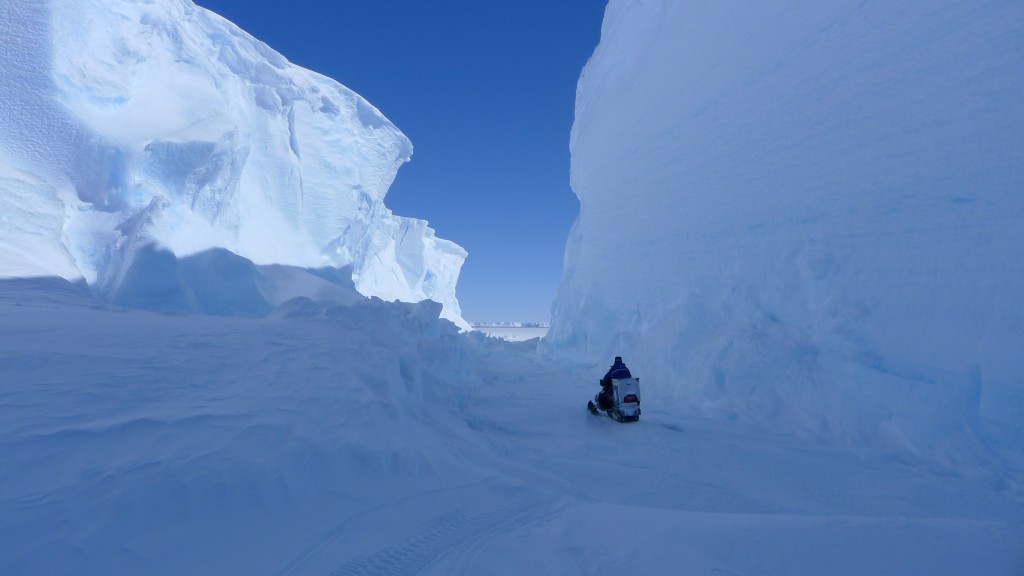
Alain Hubert, expedition team leader for the IceCon and Be:Wise projects investigating the Antarctic ice sheet. Courtesy of International Polar Foundation
As the year draws towards an end, winter officially starts and the longest night is before us here in the northern hemisphere, I have been entranced by photos from the Antarctic, full of light and white and 90 shades of blue. With a holiday break ahead of me, let me direct you to some more of these spectactular pictures and the stories of the hard work behind them, with the scientists from the International Polar Foundation out there examining the ice sheet. As I’ve been writing here on the Ice Blog recently, the Antarctic is also being affected by climate change, but to a different extent in different places. We only know this thanks to the work of scientists like Reinhard Drews and others who make their way down there and carry out the hard work.

Glaciologist and InBev-Baillet Latour Antarctic Fellowship recipient Reinhard Drews installing a GPS station on the Roi Baudoin ice shelf as part of the Be:Wise scientific project. (Copyright: International Polar Foundation)
A happy new year to you scientists out there in the field – and all ice blog followers. More from me on January 9th!! Comments welcome in the meantime.
Record polar ice loss should spur action in Doha!
Not a day seems to go by without another new revelation about the state of the polar ice, which we once though was such a normal, permanent feature of our planet. Now an international team of satellite experts has produced what they say is the most accurate assessment of ice losses from Greenland AND Antarctica to date and the result is devastating.
![]() read more
read more
Climate talks too slow for Antarctic sea snails

The pteropod, (marine snail) Limacina hilicina antarctica, Photo: Nina Bednarsek
While the climate negotiations continue at a snail’s pace in Doha, marine snails or pteropods in the Antarctic are losing their shells because of ocean acidification. Researchers from the British Antarctic Survey (BAS) and partners have published the first evidence of ocean acidification affecting live marine creatures in the Southern Ocean. Ocean acidification is caused by the uptake of carbon dioxide from the atmosphere emitted as a result of fossil fuel burning.
![]() read more
read more







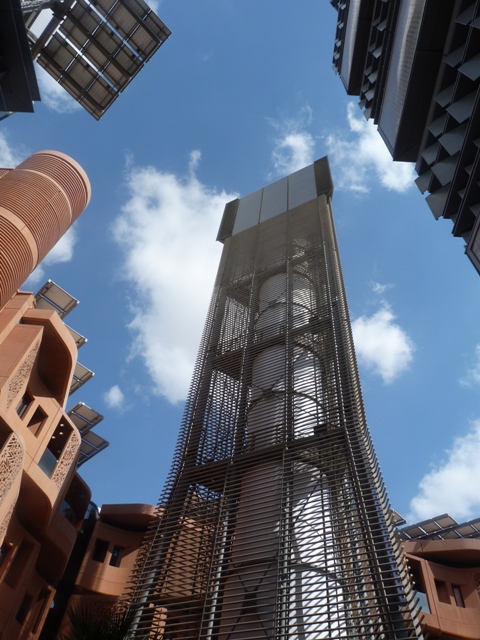

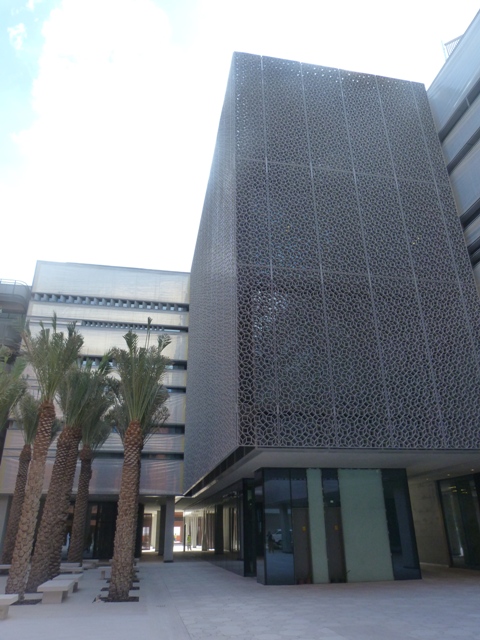

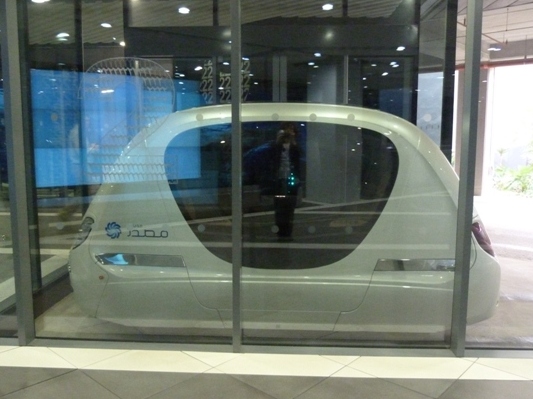
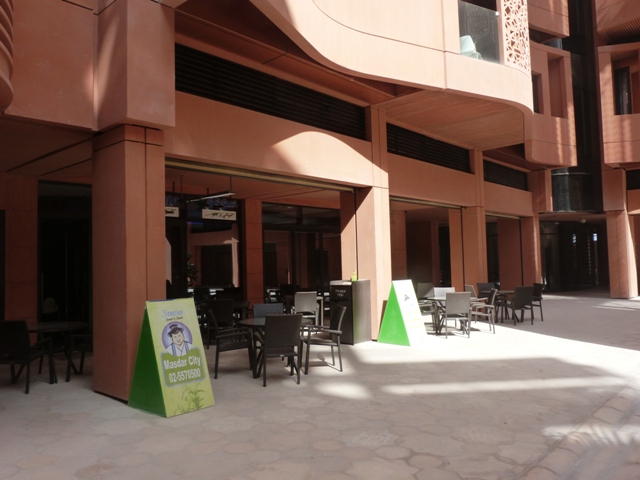

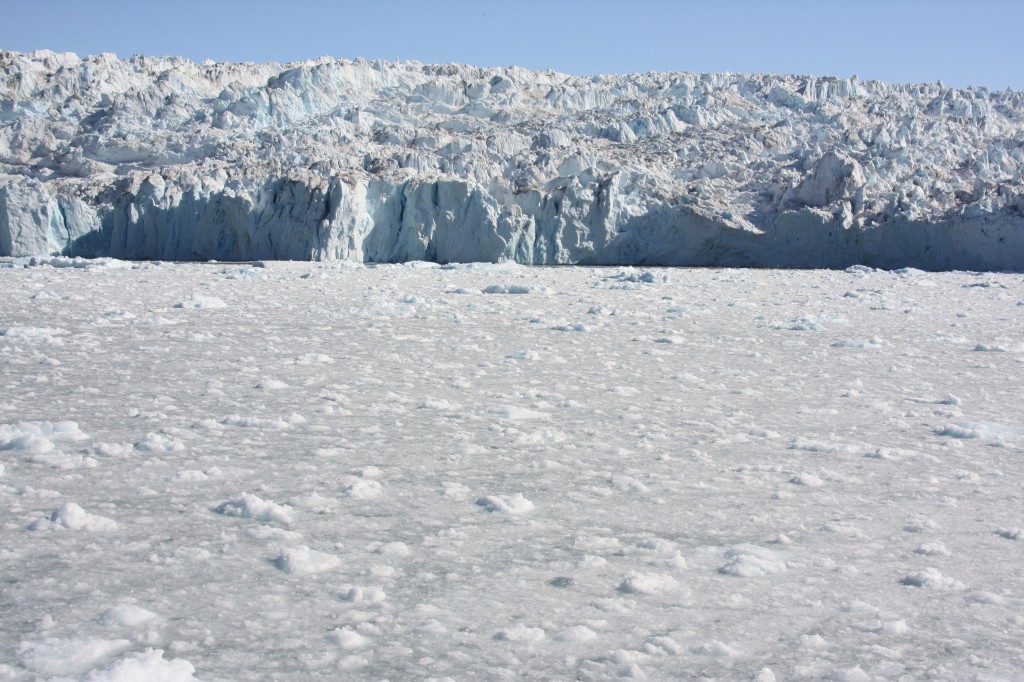
















Feedback